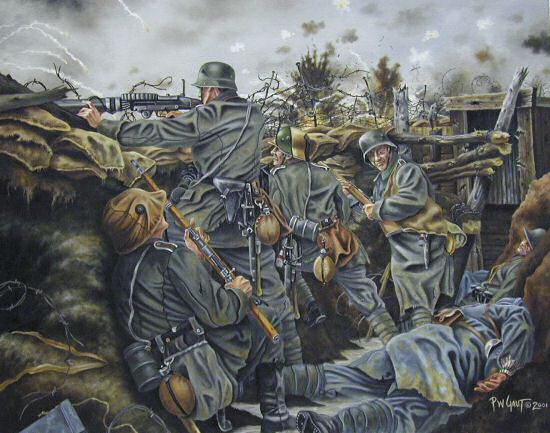Introduction

| Welcome!!!
I'm very glad that you've been able to join me at my World War I
Website. World War I is a terribly under appreciated topic in
20th century history. Because its bigger brother, WWII catches so
much of the limelight, it tends to be overshawdowed. And yet it
is entirely likely that had it not been for the events of World War I,
World War II may have been nicely passed by. Let me begin by giving you a brief overview of the site. Below you'll find a collection of links that will appear identically on every page in the site so it should be pretty easy to get around. Besides the administrative areas of the site (Homepage, Lesson Plan, and Introduction) I've broken the site up into the topics are usually covered in an introductory unit to World War I. You'll note that they include its Causes, Major Events, Technology, the role of Total War, The Treaty of Versailles, and the Cost of the war. Please click on each section, complete the assigned activity, and then jump to the next area using the links at the bottom of the page. As I designed the course, I tried very hard not to make this just simply a fun exercise that looks cool, but to create a pedagogically sound program. To that end, I've attempted to account for a number of things. First, I wanted to me sure that the activities I've planned appealed to learners with different intelligences. First for the audio learner, I've included both audio blog as well as a digital story set to inspriation patriotic music. Many of the compansion sites selected also use voice recording. For my verbal/linguisitc learners, I've included both free journal writing as well as a formal essay. Finally, for visual learners I've included numerous photos, an interactive map, and a digital story. Now that I've hopefully reached most of my students in their comfort area of learning, it's time to challenge them to think critically. This is done in two particular activities. The area called, "Total War" ask the student to analyze propaganda posters and aswer higher order questions. The area entitled "The Cost" asks the students to interpret 4 primary source documents and encorporate them into the body of a well-reasoned essay. Finally, I am a big believer that it is critical to make sure the site flows properly and follows good webdesign principles. To that end, I've kept the background understated and clean. I've also use an Arial text for ease of read. Most importanly, I've kept the navigation simple, clean, and easy to use. There is never a need to backspace and you can immediately move to any part of the site. I also avoid creating interminably long pages of text so that my readers' interest is maintain.I also strove for consistency. The last thing anyone should be concerned when a course opens whether or not they can follow the website. By making each page consistent with the others, you generate a since of comfort and calm for your students. And though I don't believe I've need to do anything extraordinary, I've also tried to keep the site ADA compliant. By adding alternative text to photo, recording my voice for at least one of the setions, and avoiding PDF's when creatiing downloadable files. I'm proud of the work I've done but I'm always looking for suggestions, so please feel free to e-mail me at whooper@ercsd.k12.ny.us. This is has been daunting but rewarding and hope you learn a little something while exploring my site. Now please begin by listening to John McCrae's In Flanders Fields. Ask yourself about the tone the poet is try to establish. Then move on to "The Causes". Enjoy |
| Homepage |
The Causes |
Major Events |
Links |
The Cost | Quiz |
| Lesson Plan |
Introduction |
Technology |
Total War |
The Treaty of Versailles |
Sources |